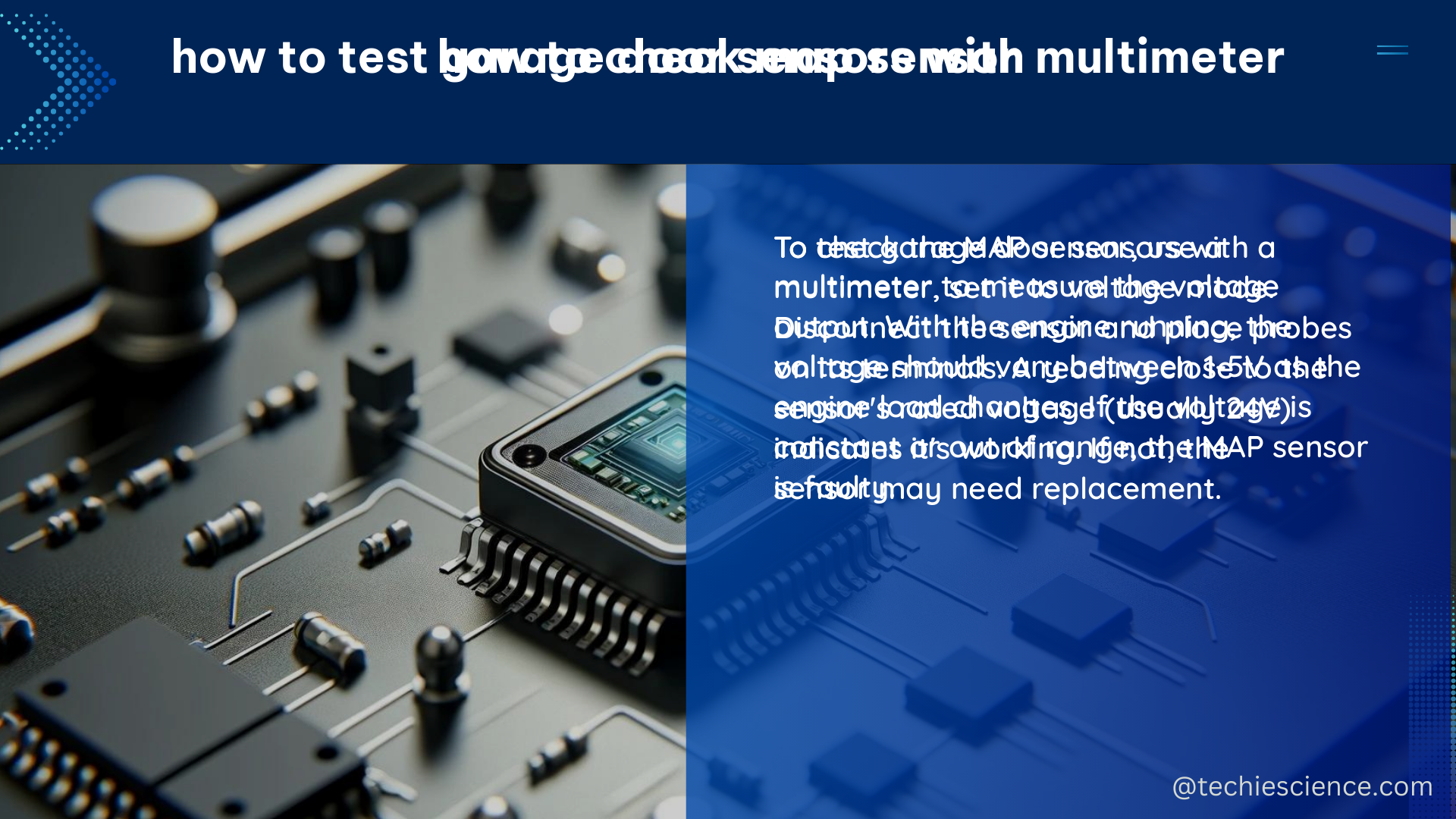The Manifold Absolute Pressure (MAP) sensor is a critical component in the engine management system of modern vehicles. It measures the pressure inside the intake manifold, which provides the engine control module (ECM) with information about the engine’s load and operating conditions. Properly checking and diagnosing the MAP sensor is essential for maintaining optimal engine performance and fuel efficiency. In this comprehensive guide, we’ll walk you through the step-by-step process of how to check a MAP sensor.
Locate the MAP Sensor
The first step in checking a MAP sensor is to locate it on the vehicle. The MAP sensor is typically mounted on the intake manifold, near the throttle body. It is often accessible from the top of the engine, making it relatively easy to access. However, the exact location may vary depending on the make, model, and year of the vehicle, so it’s important to consult the service manual or repair information for your specific vehicle.
Inspect the Wiring and Connections

Once you’ve located the MAP sensor, the next step is to inspect the wiring and connections. Check for any signs of damage, corrosion, or loose connections. Ensure that the wiring harness is securely connected to the MAP sensor and that there are no breaks or frayed wires. If you find any issues with the wiring or connections, address them before proceeding with further testing.
Test the Voltage
Using a digital multimeter, measure the voltage at the MAP sensor’s signal wire (usually the middle wire) while the engine is running. The voltage should be around 5 volts with the key in the “on” position. If the voltage is significantly lower or higher than 5 volts, it may indicate a problem with the MAP sensor or the vehicle’s electrical system.
Measure the Resistance
Next, use the multimeter to measure the resistance of the MAP sensor. The resistance should change as the engine’s RPMs change. To test this, start the engine and observe the resistance reading on the multimeter as you rev the engine up and down. If the resistance does not change or is outside the expected range (typically 2-10 kOhms), the MAP sensor may be faulty.
Check the Vacuum Hose
Inspect the vacuum hose that connects the MAP sensor to the intake manifold. Make sure the hose is not damaged, cracked, or blocked. If the hose is compromised, it can prevent the MAP sensor from receiving accurate pressure readings, leading to engine performance issues.
Test the MAP Sensor with a Scan Tool
For a more comprehensive diagnosis, use a professional-grade scan tool to monitor the MAP sensor’s readings in real-time. As you accelerate and decelerate the engine, the scan tool should display the corresponding changes in the MAP sensor’s output. If the readings are erratic, inconsistent, or do not change as expected, the MAP sensor may be malfunctioning.
Typical MAP Sensor Specifications
While the specific technical specifications for a MAP sensor can vary depending on the vehicle, here are some common values to keep in mind:
| Specification | Typical Range |
|---|---|
| Voltage Range | 0-5 volts |
| Resistance Range | 2-10 kOhms |
| Vacuum/Pressure Range | -25 inHg to +5 psi |
Conclusion
Properly checking and diagnosing a Manifold Absolute Pressure (MAP) sensor is crucial for maintaining optimal engine performance and fuel efficiency. By following the steps outlined in this guide, you can effectively test the MAP sensor and identify any potential issues. Remember to always consult the service manual or repair information for your specific vehicle, as the exact procedures and specifications may vary. With the right tools and knowledge, you can confidently tackle MAP sensor diagnostics and keep your vehicle running at its best.
References
- How to Test a Manifold Absolute Pressure (MAP) Sensor
- MAP Sensor Testing and Replacement
- Manifold Absolute Pressure (MAP) Sensor – Function, Location, Testing

The lambdageeks.com Core SME Team is a group of experienced subject matter experts from diverse scientific and technical fields including Physics, Chemistry, Technology,Electronics & Electrical Engineering, Automotive, Mechanical Engineering. Our team collaborates to create high-quality, well-researched articles on a wide range of science and technology topics for the lambdageeks.com website.
All Our Senior SME are having more than 7 Years of experience in the respective fields . They are either Working Industry Professionals or assocaited With different Universities. Refer Our Authors Page to get to know About our Core SMEs.